#california native plant society
Explore tagged Tumblr posts
Text

4 notes
·
View notes
Text
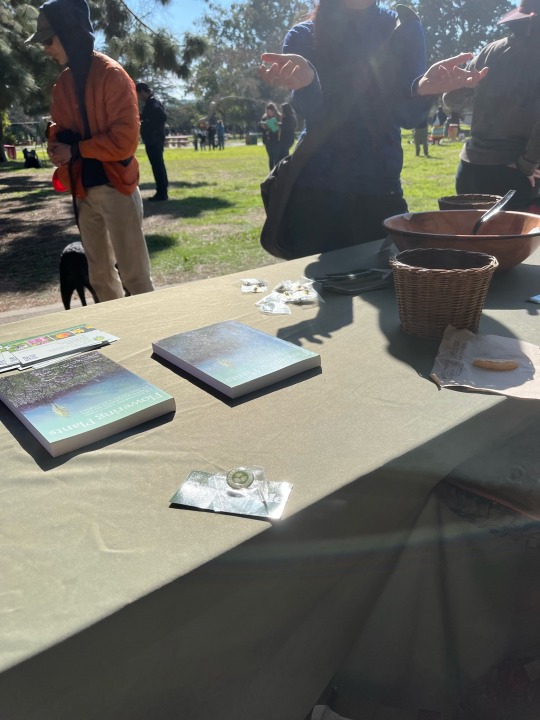
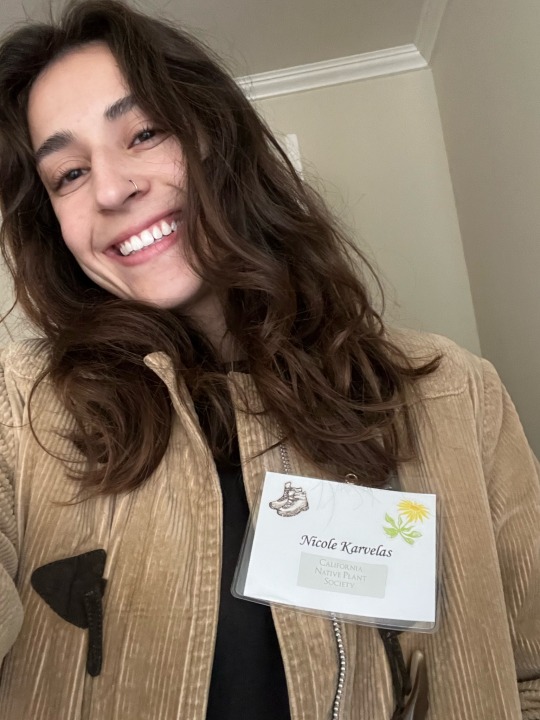



Tabling today for CNPS/TreePeople at the Anahuacalmecac restoration event!
#los angeles#native plants#restoration#community event#indigenous education#cnps#southern california#california native plants#california native plant society#volunteer#debs park#tabling#native people#Anahuacalmecac#socal#botany#gardening#outside#plants#plantblr#treepeople#oak tree#walnut tree#community#native garden#reforestation#me#kill your lawn#free event#outdoors
22 notes
·
View notes
Text

Calochortus leichtlinii
Smokey mariposa, Leichtin's Mariposa
Native to coniferous forests and chaparral habitat including lowest elevation grassy hills in the Sierra Nevada mountains, California, USA
Estimate plant range from California Native Plant Society:
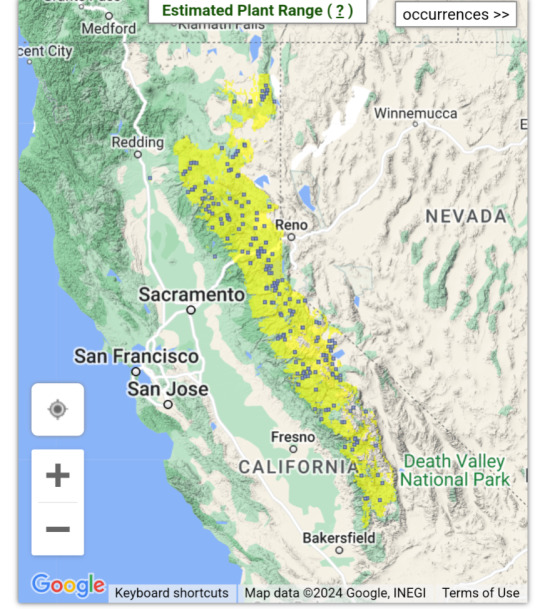
0 notes
Text
This tree has lived for 13,000 years. California’s housing crisis could doom it. (Washington Post)
At first glance, one of the world’s oldest living organisms doesn’t look like much — a collection of shrubs nestled atop a hill in a rocky gully. But those shrubs are just the crown of a giant, spreading oak tree, 90 feet long and 30 feet wide. Most of the tree is underground.
Estimated to be 13,000 to 18,000 years old, the tree — known as the Jurupa Oak — is older than almost any other plant on Earth. It has survived an ice age and rapid climate warming. Its leaves may have brushed against saber-toothed cats and 500-pound ground sloths. But now, environmentalists and locals worry that the ancient tree is under threat from a more quotidian force in modern California: development.
The Planning Commission of Jurupa Valley, a city of 100,000 an hour east of Los Angeles, is poised to approve a 1.4-square-mile development that includes a business park, 1,700 homes and an elementary school. Light-industry buildings would stand just a few hundred feet from the ancient tree.
The city believes that the project will boost the local economy. The site’s developer has said it plans to protect the tree, but environmentalists believe that the construction and resulting development could be deadly to the Jurupa Oak.
“It’s unique among most things on the planet,” said Aaron Echols, conservation chair for the Riverside-San Bernardino chapter of the California Native Plant Society. “We need to be absolutely sure that we’re not going to cause harm to this plant.”
The tree has plunged the Jurupa Valley into an ongoing debate in California: How to balance the state’s growth and need for housing with protecting its rich biodiversity?
Think about the oldest tree on Earth and you may picture a bristlecone pine known as “Methuselah” and estimated to be close to 5,000 years old. The Jurupa Oak fits into a different category: It’s a Palmer’s oak, which is a species of “clonal tree,” a network of genetically identical shrubs connected through a shared root system. Unlike in normal trees, none of the original tissue is still present; instead, after a wildfire, the tree will spring out new, genetically identical shoots from burned stumps.
71 notes
·
View notes
Text
💥LOVE & PEACE!!💥
Preorders are now open until August 2!! Snag your copy below here at https://vashwoodzine.bigcartel.com/
All profits will go towards the California Native Plant Society ♥️🌱




Description of bundles under the cut!
GUNSLINGER & PRIEST
1 digital copy of the zine (70+ pages)
STAMPEDE & PUNISHER
One (1) digital copy of the zine
One (1) physical copy of an A5-sized zine booklet (70+ pages)
One (1) random mini 2.5x3.5" photocard and deco sticker sheet
One (1) random 4x6" miniprints
SPIKEY & NICK
One (1) digital copy of the zine
One (1) physical copy of an A5-sized zine booklet (70+ pages)
Two (2) random mini 2.5x3.5" photocards and deco sticker sheets
Two (2) 4x6" pearl laminate sticker sheets
Two (2) 4x6" miniprints
VASH & WOLFWOOD
One (1) digital copy of the zine
One (1) physical copy of an A5-sized zine booklet (70+ pages)
Three (3) mini 2.5x3.5" photocards and deco sticker sheets
Two (2) 4x6" pearl laminate sticker sheets
Two (2) 4x6" miniprints
One (1) 3" glitter epoxy charm
One (1) 2.5" holographic charm
One (1) 4.5" standee
Also, here's a preview of our deco sticker sheets we're throwing in as freebies with our photocards! Use them to decorate the photocards to your heart's content! Please note that our freebies (deco sticker sheets and miniphotocards) are made in-house and may have slight variations.

229 notes
·
View notes
Text
Making a master list for all the great Hopepunk Solarpunk posts ive seen (IT UPDATES!!)
you don’t have to read all of this! you can scroll and find ones that interest you, id bold the ones that i want you to see but then all the links would be bold lmao
giving this to my future self
recipes under 45 minutes, 5 or less ingredients
What is conformity?
What is Solarpunk? (reddit masterpost)
Hattie Carthan- A 60 year old black women who paved the way (website)
Rules of Guerrilla Gardening (youtube)
When to do Guerrilla Gardening (and when not to
Easy way to do Guerrila Gardening (no seed bombs needed) (youtube)
Hope is not mindless optimism
Solar punks are against a shitty future
Deeeefinitely don’t look at the native plants and plant them alongside sidewalks to make the world greener and prettier
How to really make a difference
It is the cohabitation that makes all things beautiful.
Buy Nothing group; becoming a community
Fixing clothes- how to do it
Know your local communities
What if we stop an apocalypse?
Individual action into collective action
Wallgardens- More accessible and less space needed
Gardening for a climate resistance
Social Ecology
Actual solarpunk vs misconception
How to help with little energy/effort
An actual ecovillage!!
Attracting native birds
Amazing Ecovillage (tiktok vid)
Reconstructed Railway Bridge (tiktok vid)
What is Solarpunk? (youtube(
How can we make Solarpunk a reality? (youtube)
A cool guerrilla gardening group (youtube)
How radical gardeners took back centeral city (yourube)
Trees bring rain
Minimalism vs Solarpunk
The first guerrilla gardener (website)
More about Hattie Carthan (website)
Project of homes for homeless
Recommended youruber for Solarpunk
The problem with individualism
California has passed a food law! (Website)
How to be a Druid
How to make Biomass sustainable again
Indigenous Climate Plan!!! (Website)
What is Solarpunk? (website)
Permaculture
Conventional vs Unconventional Permaculture
Independent Gardening is NOT Inaccessible!
Role of Poor Soil
Example of a Guerilla Gardening Community
Seed Companies
How to Start a Garden (for FREE!!)
Affective Mousetrap (no rat poison needed)
How to get started with a new climate project (Instagram)
A district in Japan which works together with fish
How to start medicinal garden
Solar panels work
Ideas to improve bus stop
Kinetic energy power sources
Solar farms
Solarpunk Poetry
Food map :0 (where wild fruit/owned fruit trees are)
How to choose hope
How to turn your neighbourhood into a village
Creating a liberating society this sets off my warning sirens but idk look into it
Creating a Solarpunk city
Ableism, Cottagecire, and Solarpunk
Increasing soil capacity for water
Sourdough Recipe :3
Anarchists Calisthetics (anarcht every day!)
Guerilla gardening tutorial
581 notes
·
View notes
Text



Spartium junceum (Spanish broom)
Spanish broom is very similar to Scotch broom (Cytisus scoparius) but it's taller. Spanish broom's invasive relative Scotch broom is all over the place in Vancouver but, so far, Spanish broom has only become 'naturalized' in California and Oregon. Both plants are European in origin but Scotch broom is also native to the British Isles and seems to be more tolerant of Vancouver's colder, wetter climate.
Spanish broom is grown as a garden ornamental and has actually been granted the Royal Horticultural Society's Award of Garden Merit. This magnificent specimen has climbed into an unfortunate cherry tree to gain more sunlight. The trunk in the last photo actually belongs to the tree and I'm not sure it really appreciates its rather overwhelming companion.
#flowers#photographers on tumblr#Spanish broom#yellow#parasite#fleurs#flores#fiori#blumen#bloemen#vancouver
119 notes
·
View notes
Text



12th July 1834 saw the death in Hawaii of Botanist, David Douglas.
As promised last month a more detailed account of this not so well known Scot.
David Douglas was born in the village of Scone on June 25, 1799, just north of Perth he is much better known in the US state of Oregon, where their state tree “The Douglas Fir” is named after him Douglas was the son of stonemason John Douglas and Jean Drummond. He attended local schools, and by the time he was eleven, he was working as a gardener for local landowners, the Earl of Mansfield and Sir Robert Preston.
While working at the Botanical Garden in Glasgow, he became acquainted with the garden’s curator, Stewart Murray, and British botanist Sir William Jackson Hooker. Douglas attended Hooker’s lectures and had access to private libraries. Hooker later described him as a person of “great activity, singular abstemiousness, and energetic zeal.”
In 1823, on Hooker’s recommendation, the Royal Horticultural Society chose Douglas as a botanical collector. The Society intended to send Douglas to China, but arrangements fell through so he ended up going to eastern North America. In 1824, he found passage on a Hudson’s Bay Company vessel, the William and Ann, and arrived in Fort Vancouver on the Columbia River on April 7, 1825. Among his duties were keeping a journal of his activities and collecting seeds and plant specimens that might be useful as horticultural plants in England. Douglas visited North America four times, three times to the Pacific Northwest and California to look for plants, particularly fruit trees, forest trees, and oaks.
On his 1826 trip to present-day Oregon, Douglas took careful notes on the local vegetation as he traveled up the Willamette Valley. On September 30, he recorded one of the earliest descriptions of the Indian use of fire: “Most parts of the country burned; only on little patches in the valleys and on the flats near low hills that verdure is to be seen. Some of the natives tell me it is done for the purpose of urging the deer to frequent certain parts, to feed, which they leave unburned, and of course they are easily killed. Others say it is done in order that they might the better find wild honey and grasshoppers, which both serve as articles of winter food.“
In October, he traveled farther south to near present-day Roseburg on the Umpqua River, primarily to collect the cones of the sugar pine . On October 26, he described an encounter with a local man who led him to the “long-wished-for pines.” While shooting the cones out of a tall tree, which Douglas described as hanging at the tips of branches “like small sugar-loaves in a grocer’s shop,” he attracted several Natives who seemed “anything but friendly.” After a tense standoff, one man indicated that they wanted tobacco, and Douglas responded that he would oblige them if they brought him more cones. The men went in one direction, and Douglas with three cones and a twig went in another.
Douglas was interested in all aspects of the landscape, including animals. Those named in his honour range from the pigmy short-horned lizard to the Douglas squirrel ( . He shipped a number of specimens home for examination by leading scientists. Some species, such as the mountain beaver , were new to science. Douglas also reported seeing—and shooting—California condors on the Columbia River.
In 1827, Douglas traveled through the Northern Rockies and then to York Factory on Hudson Bay before returning to London. He worked on his collections until October 1829, when he again traveled to Fort Vancouver. He spent time on the California coast in 1831-1832, collecting plants and animals and making geographic observations. In 1832, on his return to the Columbia River, he made his first visit to the Hawaiian Islands. He explored the Fraser River district in 1833 and left the Northwest on October 18, 1833, for a return trip to the Hawaiian Islands and a planned return to London.
Douglas had been intrigued by Hawaii and wanted to continue collecting. Unable to get prompt transportation to England, he spent extra time in the islands. It was there, on July 12, 1834, that he met his end,apparently trampled by a bullock in a deep pit designed to capture cattle, although foul play has been suspected.
Douglas introduced more than two hundred Pacific Northwest plants home, many of them important in our gardens today, including Oregon’s red-flowering currant.
At Scone Palace, near Douglas’s birthplace, stands a magnificent Douglas-fir, grown from seed that he sent back from western North America in 1826. His introduction of Sitka spruce to Britain forms the basis of that country’s modern conifer forestry.
Douglas was a tireless botanist and natural historian whose name is honoured in more than eighty species of plants and animals. David Douglas High School in Portland is named for him, a peak in the Rockies as well as numerous plants, are also named after him.
Pics are of Douglas, his memorials at Scone, in Hawaii and Vancouver.
Read more on his life and death here https://keolamagazine.com/.../the-mysterious-death-of.../
8 notes
·
View notes
Note
Can I ask where you order plants from? I live in northern california (about 3 hours from oregon) looking for native plants
I'm in Washington so nowhere I buy plants would make much sense for you. My most recent post is from the conservation districts local annual plant sale but they don't ship. I will pick it up in spring.
I would get involved with the California Native Plant Society, they likely have resources for you:
30 notes
·
View notes
Note
Hi! I love your blog! I live in California and I was wondering if you had any advice on native plants in the warmer areas, or book recommendations on that topic. I have a bit of yard space, but not a lot of time to dedicate to the project.
Hey! Thanks so much, I appreciate the kind words!
I'm not in California (I'm actually way off in the opposite coast, I'm East Coast Floridian lol) but I can do my best with what I've found to be the case for me!
I can confidently say that a lot of native plants grow... kinda slowly, especially from seed. Hell, I've been growing Sandhill milkweed seeds since February, and those suckers still aren't an inch tall all the way into April! You're gonna need patience. Other plants I've heard grow really quickly and can spread fast, so you're gonna want to know which do what and prepare accordingly. In the very least, have a contingency plan for if things get out of control--maybe uprooting and repotting volunteer plants to give away could be a good strategy! Of course, if you're worried about a native plant spreading more than you'd like, you can grow it in a pot!
Either way, the thing about native plants is that they're most likely going to get better with time and care. If something looks really wimpy and sad in year one, in year two it may come back and be a superstar! Sometimes they'll surprise you--I thought a lot of my coreopsis flowers got decimated by snails last year, but this year they're coming back strong, and I've only been planting more of them! With that being said, do try to remember where you planted what--I think I accidentally destroyed my Aquatic Milkweed plant last year digging around to put something else in the ground (though my soil isn't very aquatic in the first place and I'm surprised it survived 2 years).
All that being said, I'm most knowledgeable about native plants in the Florida area (and honestly, the more I poke around on iNaturalist, the more I realize... I barely know anything lol), but! I hope I can provide some resources on California native plants for you to refer to!
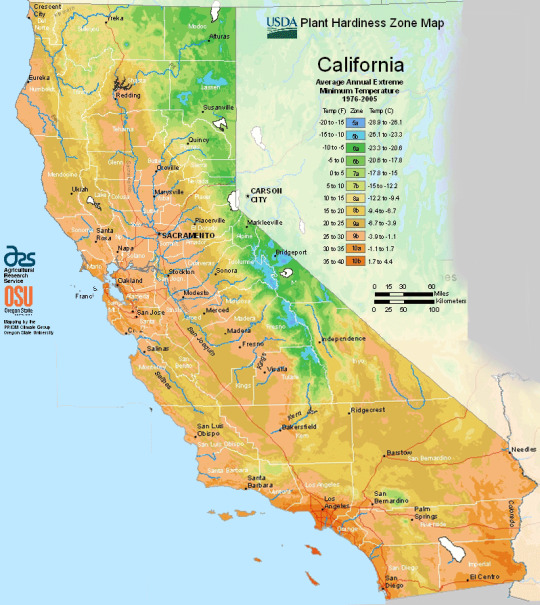
I probably don't have to be the one to tell you that California is very big. It has a lot of different climates and growing conditions, so your mileage may vary with any of the sites I give you. But hopefully at least something helps!
Here is a link to the Ojai Valley Land Conservancy's guide to native California wildflowers! It's also downloadable as a PDF! They also have a guide for planting and watering California native plants that may be helpful!
Califlora is a nonprofit database providing information on California native plants, and they seem to also have a growing guide to help you find what plants grow in what area and with what care needs!
The California Native Plant Society will likely be a good resource! They have 36 chapters state-wide, each with their own website, so checking out the chapter that serves your area will likely be a fantastic resource for you! If they're anything like the chapter in my district here in FL, they'll likely have monthly meetings and may even host field trips and plant sales! Pro tip, if they're hosting a plant sale, show up early--I missed out on milkweed because I showed up on time and not 10 minutes early. I am still salty about that, but I regaled the tale on my gardening blog, so I won't bring that here. Here's a page that'll help you find out which chapter serves your area! Their main page also has a tool to help you pick native plants by location and water needs, providing information and tips, and finding nearby nurseries that may have the plants you're looking for! Fingers crossed there's relevant nurseries in your area, my city... doesn't have much.
Across the United States, there's land grant universities that have a mission to make agricultural research accessible to growers in their state, and they'll likely also provide information on native plants as well! To the best of my ability, I think this is the extensions office website for California--the University of California Agriculture and Natural Resources website. I did however find the University of California Cooperative Extension which... is either what I meant to find, or something else, I'm no longer sure. Or is it this site that we need? I don't know what's going on anymore.
SFinBloom is a... group? Team? Pair? That's gotten popular for guerrilla gardening in the San Francisco area (but they'll also travel to other places? I lost track). They sell native seed blends on their website, and have five for California! Which makes sense, since most of the work they do is in California. I haven't tried their Southeast mix any, but they sell seed blends and shakers that one could use for on-the-go seed scattering, but no one's stopping you from buying the seeds and using them in your yard. I'd highly suggest double checking the list to be sure they're all native, which is honestly something I'd recommend when it comes to any seed mix being sold, but feel free to give it a shot! They provide the common name and the Latin name, which in my opinion is always a good sign. They have a very popular Tiktok account you can check out if you feel like it too, and an Instagram!
The California Department of Fish and Wildlife lists resources on California native plants. I've listed some already, and some others I do not have the braincells to check out at the moment.
Regarding books, I think of all my gardening books, I only have 2 that specifically talk about native pollinator plants. One is a purchase from Barnes and Nobles, which was published by the Florida Native Plant Society, so it's extremely Florida-specific. I do also have The Xerces Society Guide to Attracting Native Pollinators: Protecting North America's Bees and Butterflies, which does have a list of Pollinator and Nectar Plants in the back few pages, including a section for California and the Southwest. The rest of the book talks about why you should pollinator garden, special considerations for gardening in different places, and different kinds of native bees so let's be real. Here you go.

Shhhhh don't tell Xerces.
Speaking of native wildflowers, it would be remiss of me not to mention milkweed specifically. It's My One Thing. Milkweed4Monarchs has lists of native milkweeds arranged by state, which is what I've been using lately to recommend species to people. It provides 18 names, but I'll tell you right now, I envy anyone who can grow Heart-leaf milkweed (A. cordifolia) naturally in their region and as such. Please. Do it for me. This site also sells seeds, which I haven't purchased personally but a friend in my gardening server has successfully grown Purple Milkweed (A. purparescens) from this shop and that's honestly a pretty high recommendation in my book.
Asides from that! All I can say is that I hope this is helpful! And if any California gardeners want to chime in with their favorite resources and plant lists/plant sources, by all means go ahead!
#gardening#california#native plants#native gardening#resources#out of queue#ani rambles#answered asks#against-all-0dds#ok im gonna go garden now peace out byeeeeee
36 notes
·
View notes
Text
I want to add, I found this because of a post made on the California Native Plant Society's Facebook page.
The OP was concerned and asking, "What is making these holes in my Buckeye trees? All the saplings have the same holes."
And the answer was overwhelmingly, "Native caterpillars! "
We've been so trained to think of things eating our plants as a problem to solve by spraying and troubleshooting that we forget that part of the point of planning natives is that they are meant to be eaten!
This is a great article that summarizes some of Doug Tallamy's books and lists the main points succinctly:
https://www.smithsonianmag.com/science-nature/meet-ecologist-who-wants-unleash-wild-backyard-180974372/
#native plants#California buckeye#California native plant society#go check out their Facebook group it's wonderfully educational#doug tallamy#plant more native species#more caterpillars please
1 note
·
View note
Text
Apparently whether planting milkweed helps the butterflies is More Complicated than it seems, based on variables like where exactly you live and what type of milkweed it is.
On the bright side, I am being pointed in the direction of organizations I very much wanted to know about, like the California Native Plant Society and the Xerces Society (which is about insect/invertebrate conservation.)
Learning things is good, right?
#even if what I want right now is a quick answer to 'did I just waste three bucks on a seed packet'#and 'if I didn't is it too early to plant them' second one is almost certainly yes#but california is weird winter is our big growing season because of the rain#so ???#I mean it's not the big growing season for agriculture or home veggie gardening#but it is the time when the hills are green
8 notes
·
View notes
Photo
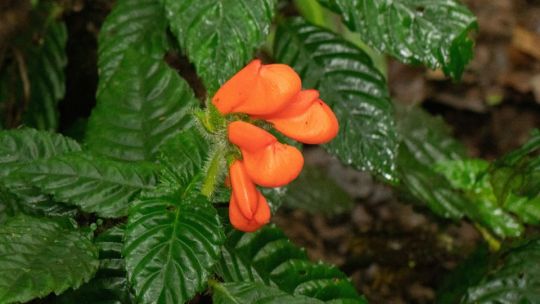


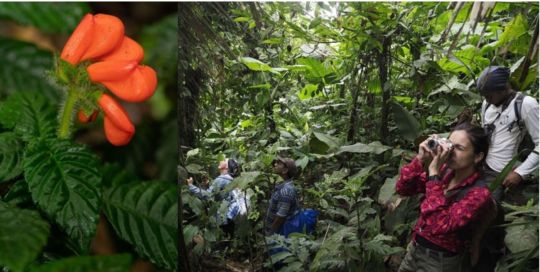

A Blazing Orange Wildflower Thought Extinct Rediscovered in Ecuador
A rare blazing orange wildflower that was thought to be extinct for 36 years was rediscovered in South America.
The wildflower Gasteranthus extinctus has only been spotted in Ecuador’s cloud forest and was last documented in 1985, according to a new study in the journal PhytoKeys. The researchers saw a dim future for the flower, so they named it “extinctus” because they believed it would soon die out, said coauthor Dawson White, a postdoctoral research fellow at the Field Museum in Chicago. Most of the cloud forest suffered deforestation in the years that followed. The habitat loss was thought to have killed off dozens of species, White said.
Researchers decided to take another look in western Ecuador in 2021 to see if there were any patches of forest left and to search for the species that had lived there. Within days, the flower was found, White said.
“It was total elation because Gasteranthus extinctus is a symbol of these unique forests,” White said.
The team gathered samples to later confirm the DNA of the plant, which was scattered in clumps in the small sections of remaining forest.
A serendipitous moment
After the magnificent rediscovery, team member Riley Fortier checked the nature app iNaturalist to see if anyone else had taken a similar photo, White said. A joint initiative of the California Academy of Sciences and the National Geographic Society, iNaturalist is a biodiversity observation network where people can post photos of plants, birds and other findings in nature for help with identification.
The researchers found photos of the wildflower posted in 2019 by a group of Ecuadorian students who had been enjoying an outing in a small conservation area.
“They were out on a trip a little north of where we were collecting and sure enough, they took two pictures of Gasteranthus extinctus, but they weren’t able to identify it as such,” White said.
He was able to track down the students to learn more details about their encounter and to include their observations in the scientific paper.
Gasteranthus extinctus is not well known in Ecuador, but another member of its family, the African violet, is, said Carmen Ulloa Ulloa, botanist and curator at the Missouri Botanical Garden in St. Louis. She was not involved in the study.
“Many people probably have an African violet from Africa in their homes, but very few of the Ecuadorian native plants are cultivated for ornamentals,” she said.
Working against the clock
While no longer considered extinct, the wildflower is still endangered, White said.
Despite the devastation the cloud forest is suffering, the Ecuadorian government continues to destroy the forest for their own gain, which wreaked havoc in that part of the country, he explained.
The originally Ecuadorian government redistributed the land to the working class in the 1950s and 1960s, White said.
People cut down trees to make way for growing crops like cacao beans and bananas, most of which end up in the United States, he added.
“We were with local landowners, and they told us about their plans to continue to cut down some of these small forests that still remain,” White said.
Ulloa Ulloa grew up in Ecuador and saw firsthand the deforestation, but as she became an adult, she understood the delicate balance of needing to protect the environment while finding ways to make money.
“You need to protect the forest, but then you also need to feed the population of the country,” Ulloa Ulloa said.
One solution is to invest in ecotourism, which invites tourists to enjoy the natural land, she said. It’s a way to protect the forest while boosting Ecuador’s economy, Ulloa Ulloa explained.
Research teams who traveled to Ecuador before and after White’s team discovered nearly half a dozen plant species new to science. The teams who discovered the new species are hoping to publish their findings later this year, he said.
White’s goals are to conserve the environment of the cloud forest while continuing inventory on the newly discovered species, he said.
By Megan Marples.
#A Blazing Orange Wildflower Thought Extinct Rediscovered in Ecuador#wildflower#wildflowers#gasteranthus extinctus#Ecuador’s cloud forest#deforest#deforestation#rare#endangered plants#nature#pretty#beauty#beautiful
22 notes
·
View notes
Text
Solar Farms Have a Superpower Beyond Clean Energy. (New York Times)
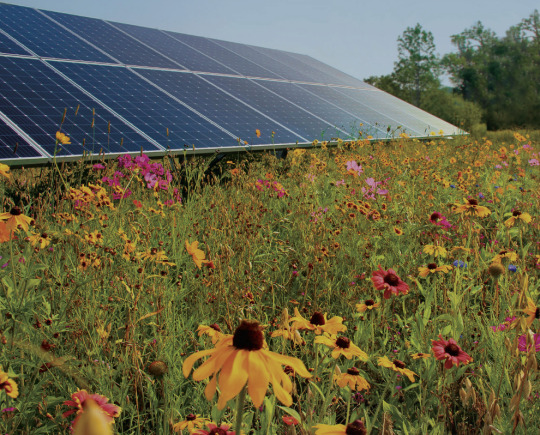
Excerpt from this New York Times story:
It’s not your average solar farm.
The glassy panels stand in a meadow. Wildflowers sway in the breeze, bursts of purple, pink, yellow, orange and white among native grasses. A monarch butterfly flits from one blossom to the next. Dragonflies zip, bees hum and goldfinches trill.
As solar projects unfurl across the United States, sites like this one in Ramsey, Minn., stand out because they offer a way to fight climate change while also tackling another ecological crisis: a global biodiversity collapse, driven in large part by habitat loss.
The sun’s clean energy is a powerful weapon in the battle against climate change. But the sites that capture that energy take up land that wildlife needs to survive and thrive. Solar farms could blanket millions of acres in the United States over the coming decades.
So developers, operators, biologists and environmentalists are teaming up with an innovative strategy.
“We have to address both challenges at the same exact time,” said Rebecca Hernandez, a professor of ecology at the University of California, Davis, whose research focuses on how to do just that.
Insects, those small animals that play a mighty role in supporting life on Earth, are facing alarming declines. Solar farms can offer them food and shelter by providing a diverse mix of native plants.
Such plants can also decrease erosion, nourish the soil and store planet-warming carbon. They can also attract insects that improve pollination of nearby crops.
Pollinator friendly solar can pay off for business, too, potentially saving money and giving projects an edge for approval at a time when communities are increasingly wary of vast solar farms. Developers are taking note.
But there’s a broad spectrum of pollinator friendliness and little agreement on what efforts should count. Standards are often nonexistent. Some big projects are limiting pollinator habitat to tiny corners of their sites. Ecological value varies widely.
Communities may not understand the difference, and corporate marketing may exaggerate. That’s led to accusations of greenwashing.
Pollinator habitat on solar farms is “a serious work in progress,” said Scott Black, executive director of the Xerces Society for Invertebrate Conservation, a nonprofit group that is working on an effort to bring some clarity by certifying solar sites.
“It’s not fair if some people are truly stepping up to do this right and another company is barely doing anything and saying they’re pollinator friendly,” he said.
“If you build it, will they come?” he asks in his research. So far the answer is a resounding yes, if you grow the right plants.
In a study published late last year, his team found that insect abundance had tripled over five years on test plots at two other Minnesota solar sites. The abundance of native bees grew twentyfold.
The results come amid a global decline of wildlife that leaders are struggling to address. Some of the most well-known insect species are in trouble: Later this year, the federal government is expected to rule on whether to place monarch butterflies on the Endangered Species List. North American birds, for their part, are down almost 30 percent since 1970.
But at this site, called Anoka County Solar, acoustic monitoring has documented 73 species of birds, presumably attracted by the buffet of seeds and insects. Some build nests in the structures supporting the panels.
Mammals are showing up, too. Mr. Walston checked a trail camera before leaving, hoping to discover the occupant of a remarkably large burrow: A fox, he thought, or a badger. No luck.
(It’s trickier to make solar sites friendly to large wild animals, in part because developers are nervous to let them near expensive infrastructure, but efforts are underway there, too.)
What makes this meadow possible is the height of the panels. A prairie restoration firm had told ENGIE, the owner and developer, that taller panels would allow for a sharp increase in native vegetation species, providing much more ecological diversity, said John Gantner, the director of engineering and delivery for ENGIE’s smaller-scale sites.
26 notes
·
View notes
Text

We are proud to announce that we were able to donate $13,696.69 to the California Native Plant Society!! Thank you all so much for your incredible support; we are truly grateful that we could help make a difference for our beautiful environment. 🌱 ❤️
With such exciting news being said, we will be announcing the dates for our leftover sales soon, so be sure to keep your eye out!
Again, thank you all so much! We couldn't have done this without you!! Love and peace! ❤️ ✌️
37 notes
·
View notes
Text
Ancient Roots: Overview of Food Culture
This is 100% inspired by @bonefall. Credit where credit is due!
A basic overview of this guide:
Why????
Regions
Foods
List of "recipes" and foods
Notes
Why additional food? Aren't cats carnivores??
Yep! Cats are carnivores, however, in a society of cats that can tunnel, use and make tools, medicine, religion, and all that, what is really limiting me from giving them special foods and recipes? In my AU, clan cats (and my fanclan cats) aren't limited to a full meat diet. HOWEVER! MEAT STILL MAKES UP THE MAJORITY OF THEIR DIET TO KEEP SOMEWHAT WITH REAL BIOLOGY.
Clan cats will eat berries and plants for energy, a snack, and for health reasons. They do not eat them for their main source of food, simply as a food supplement. In leaf-fall, when most berries are ripe, they are eaten off the bush, but regardless, some are still brought back to the clan to share and preserve for later use.
Regions
As stated previously, I am only really using plants that can be found here in the Pacific Northwest (PNW in this AU is defined as: British Columbia in Canada; Washington State, Oregon, and Northern California in the United States. All of these regions being referenced are limited to being on the WEST side of the Cascade Mountain Range. Technically, the PNW is larger than is in this AU). These plants may be native or naturalized, and I will generally try my best to keep away from names and plants that are garden-grown (or, in other words, are unlikely to be found in the "wild" that Clans live in).
Foods
In this AU, most foods are dried, but some are cooked either as an alternative or as a way of final preparation.
Cooking is dangerous and was almost never done in the past, but became more common after the move to the lake territories. Clan Cats can't efficiently create fire, so they do try their best to keep flames going (or at the very least, have some coals or embers to create a new flame). Fires are originally created opportunistically (lightning strikes, twoleg fires/camps, and small wildfires) because of the struggle it takes to get a fire started on their own. I don't know how many of you have ever tried to start a fire with two sticks, but it's a pain in the ass for me, with two functioning thumbs. I think it would be much more frustrating for cats with no functioning thumbs. If one clan loses their flames, they may get new ones from a neighboring clan, but it is often traded for rather than freely given.
Foods by clan [recipes and ideas!]
To be added
Notes
This is your daily PSA to NOT feed what I create in my MIND to cats. Please. These "recipes" are created for FICTIONAL cats in a FICTIONAL setting, even if they are based on reality. Please. I beg of you. Do not feed your cat fictional food that I, who is NOT a food scientist, have created. I am a marine biology major. I am not a culinary or animal health sciences major. Please, for the love of all that is holy, do not feed your cats what I create.
#BlizzardstepsGuilt#OceansRequiem#FFMistClan#snini9sWCAU#ancientroots#AncientRootsAU#Food#Recipes#Food Culture#Clan Foods#Clan Culture#Clan Food#ARFood#ARCulture#ARClans
3 notes
·
View notes